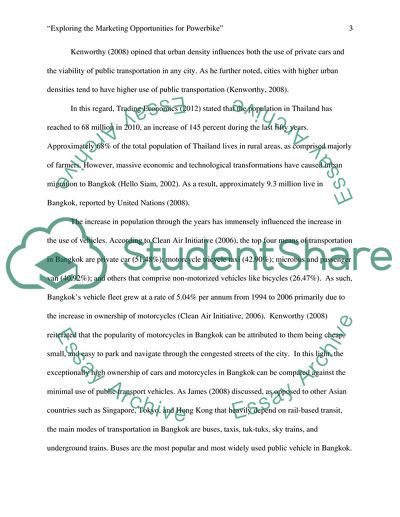Cite this document
(“The Case of Bangkok Bicycle Market Assignment Example | Topics and Well Written Essays - 3500 words”, n.d.)
The Case of Bangkok Bicycle Market Assignment Example | Topics and Well Written Essays - 3500 words. Retrieved from https://studentshare.org/marketing/1775532-the-benefits-of-cycling-a-marketing-opportunity-for-powerbike-in-thailand
The Case of Bangkok Bicycle Market Assignment Example | Topics and Well Written Essays - 3500 words. Retrieved from https://studentshare.org/marketing/1775532-the-benefits-of-cycling-a-marketing-opportunity-for-powerbike-in-thailand
(The Case of Bangkok Bicycle Market Assignment Example | Topics and Well Written Essays - 3500 Words)
The Case of Bangkok Bicycle Market Assignment Example | Topics and Well Written Essays - 3500 Words. https://studentshare.org/marketing/1775532-the-benefits-of-cycling-a-marketing-opportunity-for-powerbike-in-thailand.
The Case of Bangkok Bicycle Market Assignment Example | Topics and Well Written Essays - 3500 Words. https://studentshare.org/marketing/1775532-the-benefits-of-cycling-a-marketing-opportunity-for-powerbike-in-thailand.
“The Case of Bangkok Bicycle Market Assignment Example | Topics and Well Written Essays - 3500 Words”, n.d. https://studentshare.org/marketing/1775532-the-benefits-of-cycling-a-marketing-opportunity-for-powerbike-in-thailand.


